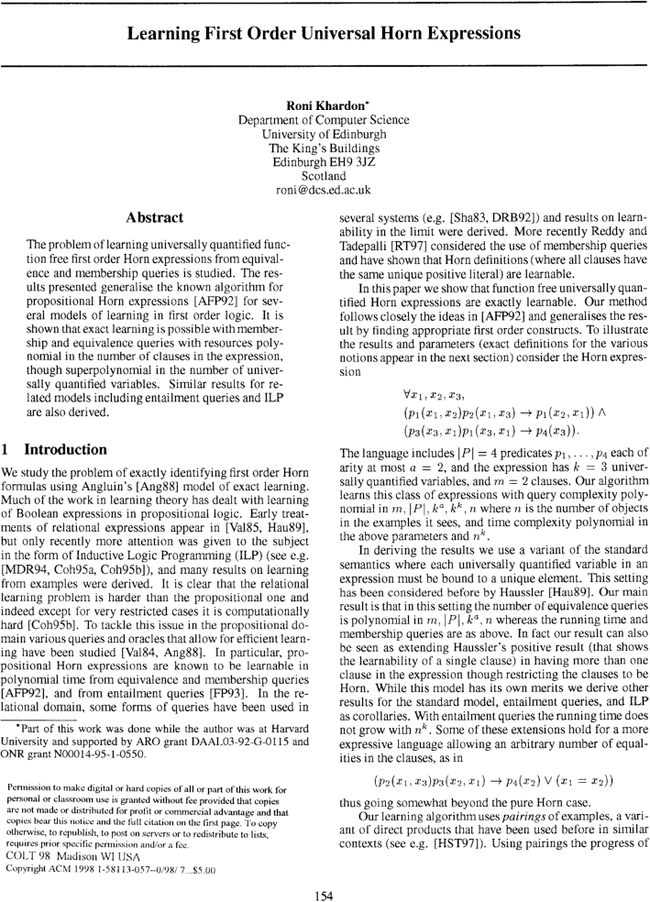Cited By
View all- Abouzied AAngluin DPapadimitriou CHellerstein JSilberschatz AHull RFan W(2013)Learning and verifying quantified boolean queries by exampleProceedings of the 32nd ACM SIGMOD-SIGACT-SIGAI symposium on Principles of database systems10.1145/2463664.2465220(49-60)Online publication date: 22-Jun-2013
- Muggleton SRaedt LPoole DBratko IFlach PInoue KSrinivasan A(2012)ILP turns 20Machine Language10.1007/s10994-011-5259-286:1(3-23)Online publication date: 1-Jan-2012
- Reddy CTadepalli P(2005)Learning first-order acyclic Horn programs from entailmentInductive Logic Programming10.1007/BFb0027308(23-37)Online publication date: 18-Jun-2005
- Show More Cited By


